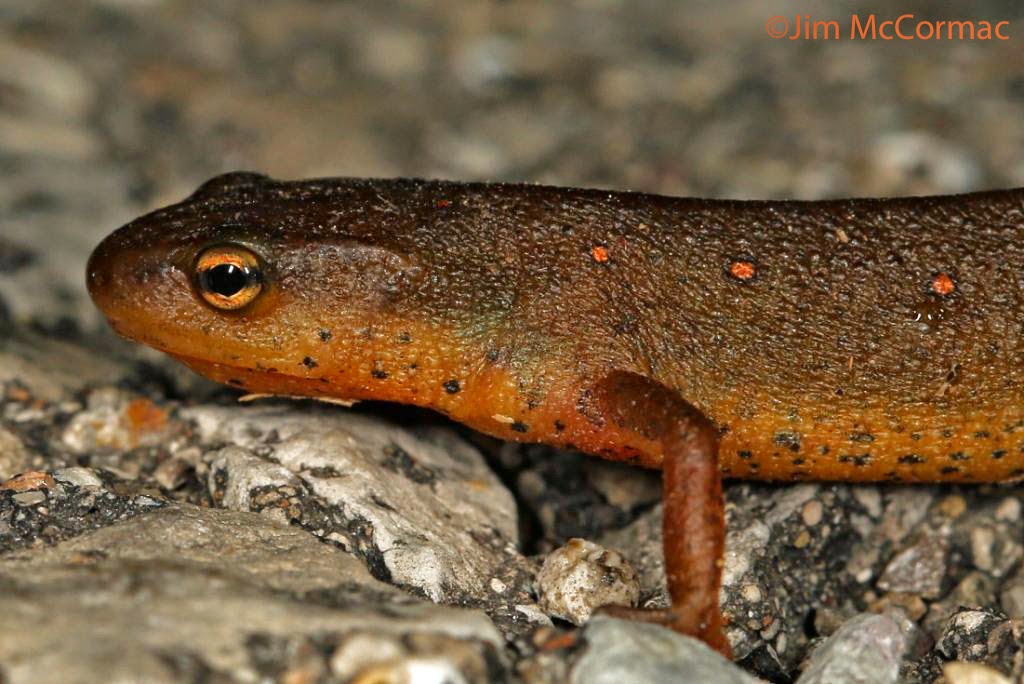A spotted salamander, Ambystoma maculatum, threads it way through a wet leafy forest floor. It, and many others of its kind, were on the march last Thursday evening. I always make time to go nocturnal with the first warm spring nights, and catch the eruption of amphibians - especially salamanders - as they rise and venture to breeding pools.
This is a smallmouth salamander, Ambystoma texanum, and it too was headed to a massive vernal pool complex. This animal and the preceding (and some of the upcoming) were found and photographed in Crawford County. Thanks to Josh Dyer with the Crawford County Park District for meeting up with Susan Nash and I, and sharing this place. If you get the opportunity to go to one of Josh's outings or programs, do it. CLICK HERE for information.
A spotted salamander rears up like a mini dragon, the better to see what kind of threat your narrator may pose. I am no threat, but cars certainly are. This one was crossing a roadway, and many don't make it across. On Wednesday night, I along with Cheryl Erwin visited one of my favorite sites, a wet woods in Logan County bisected by a rarely traveled country road. Big vernal pools bookend the roadway, and salamanders and other amphibians cross in droves. Even though few vehicles use the road, those that do pass by during migrations cause carnage. I was delighted to hear from LeeAnn Leslie Shively Swonguer that the township trustees recently closed the road temporarily during a big amphibian migration. That is awesome, and major kudos to LeeAnn as I suspect she had a lot to do with that. Many moist skins were saved that night.
The red eft larval stage of a red-spotted newt, Notophthalmus viridescens, crosses the roadway. An eft lives a terrestrial life for several years before entering the water of a pond or wetland, and living the remainder of its life as the adult newt. This particular road always has efts crossing it in early spring along with many other amphibians. I suspect they are making their final overland treks, and preparing to enter the water and transform into the adult stage.
A green frog, Lithobates clamitans, floats in several feet of cold water. I can tell you it was cold because I was standing in it.This particular pool was jamming with amphibians, and I quickly saw there would be photo opportunities here. Unfortunately, I had forgotten to throw my chest waders in the car, and only had knee boots. The water was far deeper than that. Oh well, if the frogs can stand it so can I, and in I went. Frogs are often FAR more approachable at night than they would be during daytime, and this one allowed me to get as close as I wanted.
Lots of frogs and some toads were crossing roads last Thursday night, taking advantage of the wet night to move to breeding sites. Included in their ranks was this gorgeous northern leopard frog, Lithobates pipiens. During the day, leopard frogs typically bound off in a series of enormous leaps, and can be rather difficult to approach closely. Not so at night. We lifted the girl off the road and placed her on a convenient stump for photographs, and to get her off the road. NOTE: If you must handle amphibians, make sure your hands are thoroughly wet so as to avoid damaging their skin. In general, it's best to not touch them, in my opinion, unless of course you are required to move them to safety.
I mentioned the frog is a "girl". You can tell the sexes apart by the size of the tympanum, or "ear" - that round spot directly behind the eye. In males, it is noticeably larger than the eye, and about the same size or slightly smaller in females.
The pools were alive with the sound of music - frog music. This is a western chorus frog, Pseudacris triseriata, singing away. Lots of them were rasping away just about anywhere there was a wetland. I recently wrote about this species in more detail HERE.
Click the video above for a brief recording of the distinctive song of a chorus frog, shot at close range in Josh's Crawford County vernal pool.
A tiny spring peeper, Pseudacris crucifer, glares at your narrator, who rather impolitely intruded on the frog's wetland.
Here's what a spring peeper in full puff looks like. I worked hard for this shot, I don't mind telling you. This was in the (cold!) wetland (with plenty of robust leeches!) that I waded around in for about one-half hour. My primary quest was to obtain good shots of singing peepers. Normally, in order to make such shots you have to enter the water, or at least your probability of encountering singers rises significantly if you do. Sure enough, I found about eight singing frogs, but all of them shut up as soon as I got within range. Finally, I spotted this guy over on the bank and he cooperated. Turns out I wouldn't have had to even go in the water to get the shot! Oh well, being one with the frogs is part of truly experiencing life in a frog-filled vernal pool.
I made this audio recording while standing waist deep in water, surrounded by numerous singing spring peepers. If you've never done this, you owe it to yourself. The din created by these tiny blowhards is mind-boggling. When in very close proximity, their calls actually hurt one's ears.
Get out and enjoy the peepers and other amphibians while you can. A person only has so many springs to experience, and you should not let even one of them slip by without listening to the music of the frogs.








